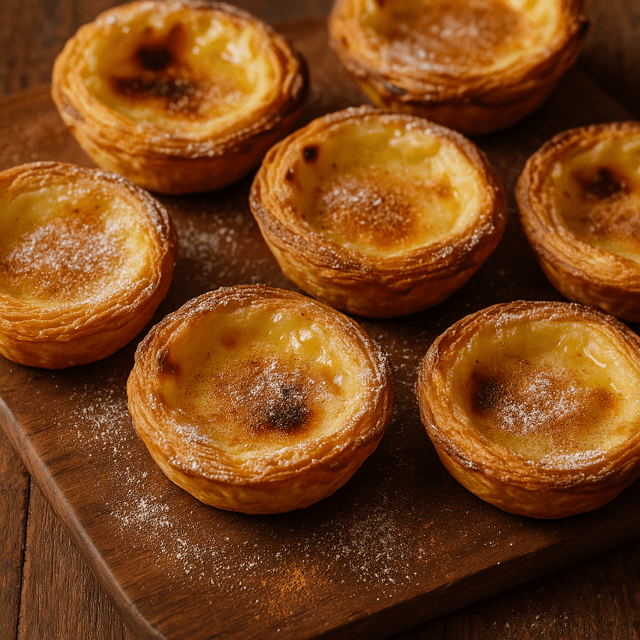From Monastery to Mainstream: The Story Behind Portugal’s Iconic Custard Tart

From Monastery to Mainstream: The Story Behind Portugal’s Iconic Custard Tart
Crisp, caramelised, and impossibly creamy—few bakes have achieved global cult status quite like Pastéis de Nata, Portugal’s iconic custard tart. At once humble and luxurious, these golden pastries are a window into centuries of culinary tradition, monastic ingenuity, and colonial influence.
A Bake Born in the Cloisters
The story of Pastéis de Nata begins not in a bustling bakery, but in the quiet cloisters of the Jerónimos Monastery in Belém, Lisbon. In the 18th century, Catholic monks used egg whites to starch their habits, leaving behind a surplus of egg yolks. Ever resourceful, they began using the yolks in desserts—leading to the creation of many egg-based sweets across Portugal, with Pastéis de Nata among the most beloved.
These tarts became a cherished recipe in the monastery’s kitchen, made with a rich egg custard nestled in layers of flaky pastry, then baked at high heat until blistered and caramelised on top.
A Secret Recipe Passed On
When the monastery was closed in the 1820s due to the dissolution of the monasteries, the monks sold the pastel de nata recipe to a nearby sugar refinery. The owners opened the Fábrica de Pastéis de Belém in 1837, where the tarts—now famously known as Pastéis de Belém—are still sold today, made from a closely guarded secret recipe.
Only a select few know the exact method used at this shop, but the pastry has since become a nationwide staple, now known more broadly as Pastéis de Nata. In Lisbon, you’ll find them at nearly every café and bakery, served warm with a dusting of cinnamon or powdered sugar.
Global Reach and Local Twists
Portugal’s colonial reach helped spread the custard tart around the world—from Macau (where it evolved into the “Portuguese egg tart” with a Cantonese twist) to Brazil, where it’s often found in pastelarias and bakeries. In recent years, its popularity has surged globally, appearing in high-end patisseries and home kitchens alike.
Today’s versions vary slightly in texture and sweetness, but the essence remains the same: a perfect contrast between the crispy pastry shell and the creamy, slightly scorched custard filling.
More Than a Dessert
Pastéis de Nata are not just a sweet treat—they are a cultural ritual. In Portugal, they are typically enjoyed mid-morning or in the afternoon with a bica (Portuguese espresso), often shared with friends in the unhurried rhythm of daily life.
This deceptively simple pastry tells a rich story of Portugal’s past: its religious traditions, colonial history, and undying love for sweet indulgence. And for the rest of us? One bite is all it takes to be transported to a sun-drenched Lisbon café, the scent of cinnamon in the air.
Want to try making these at home? Click here for the full Pastéis de Nata recipe.
Share your thoughts
Did you find this history article interesting? Rate it below and let others know!